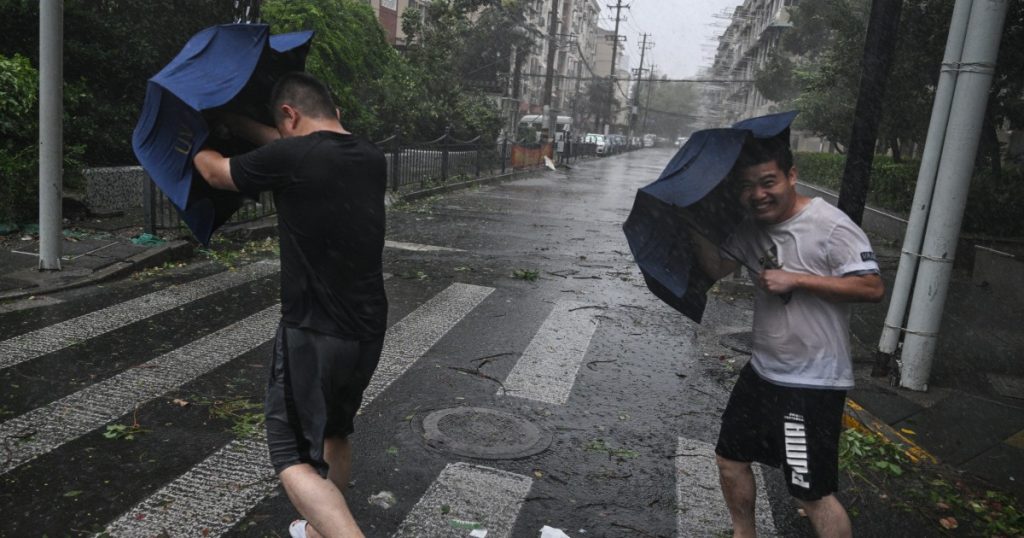Shanghai, a bustling financial hub with nearly 25 million residents, came to a standstill as Typhoon Bebinca made landfall on Monday morning. This Category 1 storm brought top wind speeds of 94 miles per hour near its eye, making it the most powerful tropical cyclone to directly hit the city in over seven decades. More than 10,000 trees were felled by strong winds, and over 400,000 people were evacuated from at-risk homes in Bebinca’s path. Despite the severe weather conditions, only one injury was reported as a result of the storm, thanks to the efforts of more than 56,000 rescue workers deployed in the city.
The impact of Typhoon Bebinca extended beyond its immediate landfall, with more than 1,400 flights from Shanghai’s airports and over 570 passenger trains being canceled since Sunday evening. This disruption in travel plans affected many people who were on the move over the Mid-Autumn Festival holiday, a three-day public holiday in China. Parks and businesses were closed, metro train services were disrupted, and highways and elevated roads had special restrictions or closures in place. Additionally, resorts such as Shanghai Disney Resort, Jinjiang Amusement Park, and Shanghai Wild Animal Park were temporarily closed, and many ferries halted their operations.
By early Monday afternoon, the eye of the storm had crossed from Shanghai to the neighboring province of Jiangsu, but rains were expected to continue in China’s financial capital throughout the rest of the day. Shanghai typically does not experience direct hits from strong typhoons, as these storms generally make landfall farther south in China. However, Typhoon Bebinca’s arrival served as a reminder of the city’s vulnerability to extreme weather events. Prior to Bebinca, another destructive storm named Yagi, a Category 4 typhoon, had passed by the southern island province of Hainan, causing further disruption and damage in the region.
Overall, Shanghai faced significant challenges as it braced for the impact of Typhoon Bebinca, with widespread disruptions to transportation, businesses, and public services. The city’s resilience was put to the test as residents and authorities worked together to ensure the safety and well-being of everyone in the affected areas. Despite the severity of the storm and the likelihood of continued rainfall, efforts were made to reduce the risk of further damage and ensure a swift recovery from the aftermath of Typhoon Bebinca. The measures taken by the government and emergency services helped minimize casualties and disruptions, highlighting the importance of preparedness and response in the face of natural disasters.


